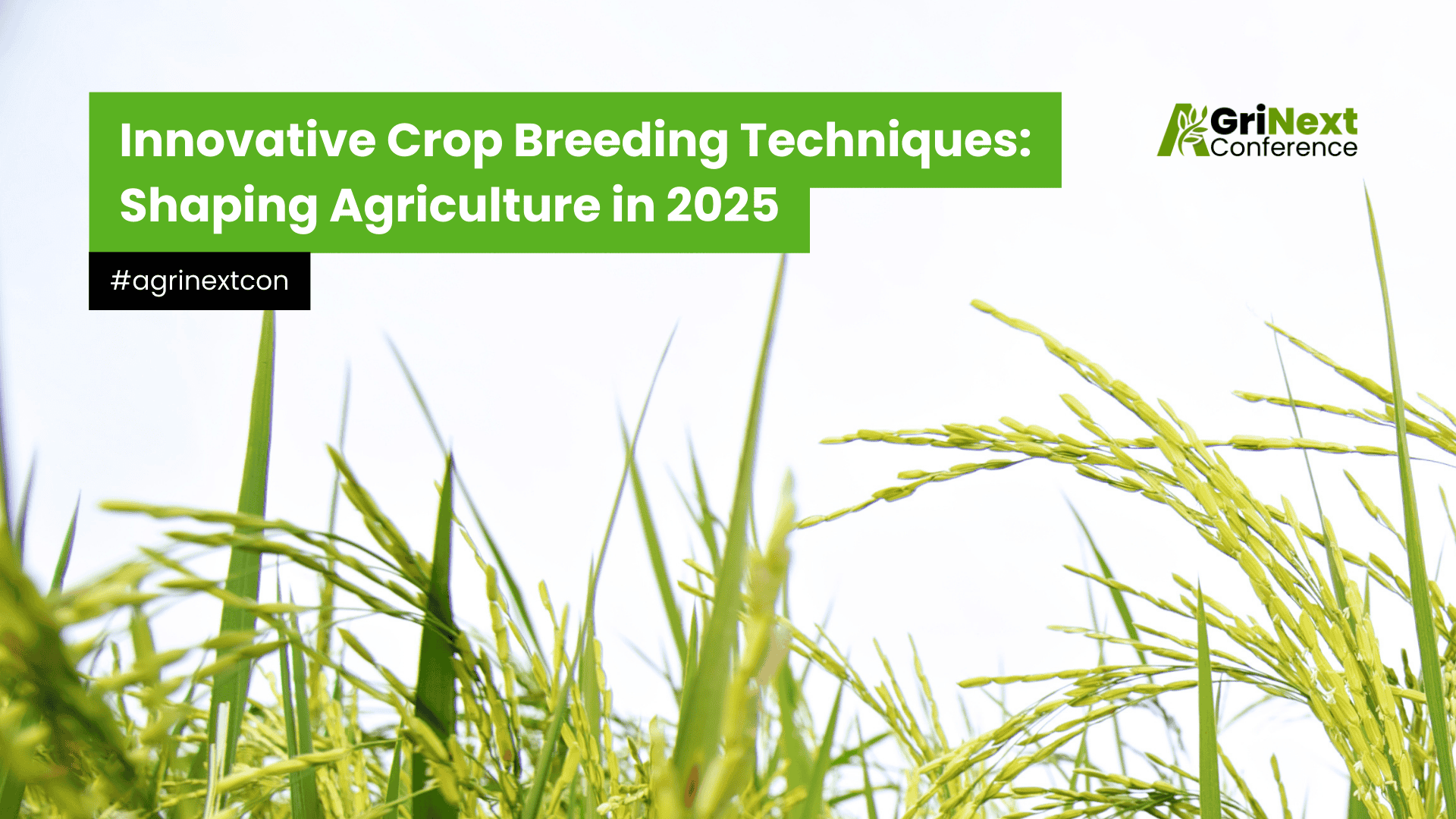
In 2025, crop breeding is undergoing a profound transformation, driven by precision genetics, artificial intelligence, and advanced biotechnology. These innovations are delivering higher yields, improved climate resilience, and greater efficiency—laying the groundwork for a food-secure future. Upcoming events such as AgriNext 2025 will serve as important platforms to highlight these advancements, foster collaboration, and explore their real-world applications.
Key Innovations Revolutionizing Crop Breeding
CRISPR-Cas9 Genome Editing – This breakthrough tool enables scientists to precisely modify plant DNA, introducing traits like drought tolerance, enhanced nutrition, and pest resistance—quickly and without adding foreign DNA.
Example: In field trials, CRISPR edits of the KRN2 gene increased grain yields by 8–10% in maize and rice, while multiplex gene edits boosted yields in some rice cultivars by up to 68%.
AI-Driven Genomic Selection – Artificial intelligence and machine learning now analyze massive genomic datasets to pinpoint optimal trait markers, predict inheritance patterns, and focus breeding efforts on the most promising genotypes, dramatically shortening development timelines.
Example: An Australian wheat program combining AI and CRISPR is aiming for 10% bigger yields while reducing breeding time by 10–15× compared to traditional methods.
Precision Cross-Breeding with AI – AI-powered simulations assess thousands of potential parental combinations to identify those with the best adaptation, resilience, and yield potential—reducing trial-and-error and accelerating variety development.
Example:Research indicates that
AI-driven parent selection can cut breeding cycles for complex traits nearly in half, enabling faster deployment of regionally adapted, climate-resilient varieties.
Speed Breeding – Using controlled environments, breeders can fast-track plant growth cycles to achieve multiple generations in a single year, enabling rapid release of new, improved varieties.
Example: Controlled-environment programs in Australia have cut wheat breeding from 12 years to under 6 years, doubling development speed.
Integration of Omics Technologies – Genomics, transcriptomics, proteomics, and metabolomics together provide a detailed molecular map of crops, allowing breeders to unravel complex gene interactions and design targeted improvement strategies.
Example: Omics-guided rice improvement programs in China have identified nutrient-enhancing genes that increased grain protein content by 17% without yield loss.
High-Throughput Phenomics – Automated imaging and sensor-based systems now assess plant traits at scale, enhancing the precision and efficiency of selection in breeding programs.
Example: A hybrid phenomics platform combining remote sensing, deep learning, and large language models improved wheat yield predictions by over 20% compared to standard field scoring.
Blockchain & Big Data Solutions – Digital tools ensure traceability, transparency, and integrity across breeding programs and supply chains—building trust while ensuring compliance with global standards.
Example: Blockchain-based seed certification in pilot programs has cut verification time from weeks to less than 48 hours while eliminating record discrepancies.
Impact Highlights
Maize & Rice: New CRISPR methods are raising yields by around 8–10%, and in some cases, even up to 68%.
Wheat: Using AI with CRISPR is giving about 10% higher yields and making breeding 10–15 times faster.
Cross-breeding: With AI support, the time needed for breeding cycles is nearly cut in half.
Speed breeding: New methods are reducing crop development time from 12 years to under 6.
Rice nutrition: Advanced research has increased protein content by 17% without reducing yield.
Trait selection: Modern imaging and data tools make it over 20% easier to pick the best crop traits.
Food certification: Blockchain has shortened the process from weeks to just 2 days.
Shaping the Future of Agriculture at AgriNext 2025
Through its conference platforms, collaborative networks, and strategic focus on smart breeding programs, AgriNext 2025 will provide breeders, researchers, and ag-tech startups with a stage to explore and advance cutting-edge innovations. From faster breeding cycles to more predictable outcomes, these technologies are paving the way for robust, locally adapted seeds designed to thrive in the face of climate change.
At AgriNext 2025, these advances won’t just be discussed—they will be showcased, tested, and connected with real-world solutions. The event highlights how science and technology are not only improving crop performance but also redefining the very foundation of agriculture, ensuring that future generations have secure, sustainable food systems.
Signup For AgriNext Conference Newsletter

